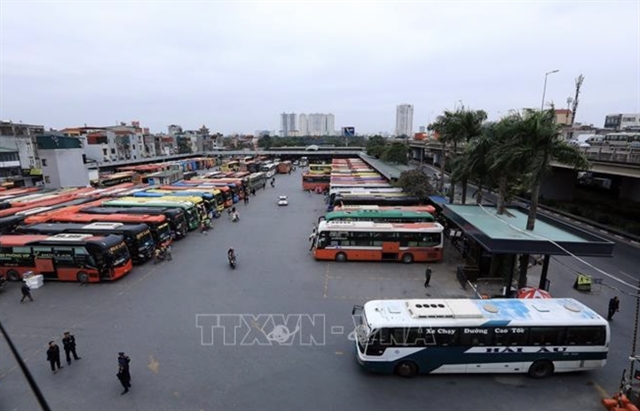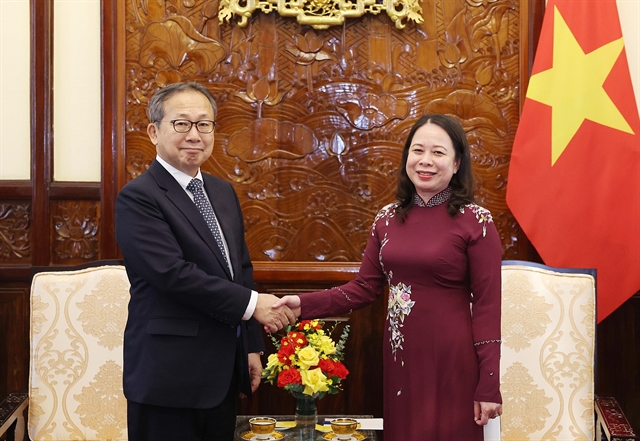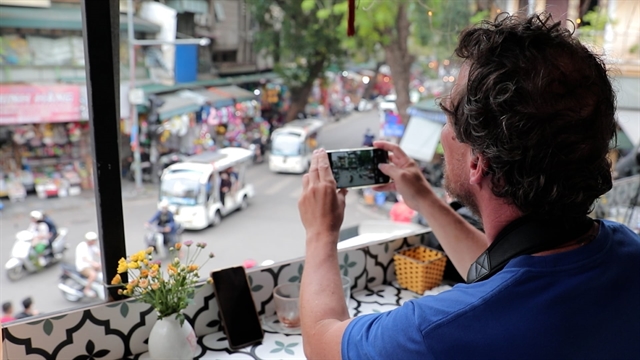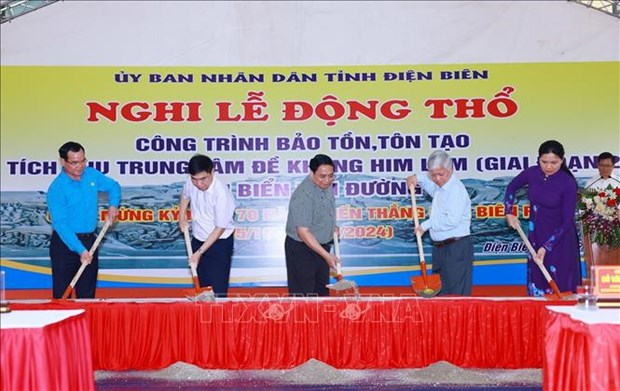 Society
Society

The worst drought in the last 30 years from El Nino troubled the local coffee growers in Dak Lak Province, but it also taught them the value of saving water.
 |
| A coffee farmer in Cu M’gar Commune Hoàng Mạnh Thu places a plastic bottle upside down on the ground to check the water level. — Photo Hồ Thủy |
By Minh Hương
HÀ NỘI — The worst drought in the last 30 years from El Nino troubled the local coffee growers in Đắk Lắk Province, but it also taught them the value of saving water.
Đắk Lắk, the biggest plantation of the robusta with 30 per cent contribution to Việt Nam’s economy, the second largest robusta export, has seen only a few spells of rain since last December, the country’s Coffee and Cocoa Association said last month.
Rainfall in April in the Central Highlands and the south is forecast to be 50 per cent to 70 per cent lower than average, according to the Việt Nam’s National Center for Hydro-Meteorological Forecasting. Rainfall in Đắk Lắk Province is 86 per cent less as compared to this time last year.
Some 20 per cent of the 599 reservoirs used for irrigation have dried up, the local media reported, and added that 118 are out of use as compared to 30 at the same time last year. At least 7,000ha of coffee plantations have died there since March, according to the provincial Department of Agriculture and Rural Affairs.
Local resident Phạm Văn Thao, 28, said besides the irrigation water, the lack of water for consumption was the worst since he was born. Currently, there were two days with water in a week since the early this year, he said.
“It should rain in March or April but it has not rained till now,” Hoàng Mạnh Thu, a coffee grower in Cu M’gar Commune said.
According to EDE Consulting Pacific, a Germany- based consulting firm which is now carrying out a €2 million (US$2.3 million) private-public- partnership (PPP) project ran between Nestle Group and Swiss Agency for Development Cooperation (SDC) to change the irrigation methods in the Central Highlands, the biggest factor for vulnerability was the dependency on water for irrigation.
EDE says farmers are using up the groundwater and levels are already declining. With increasing temperatures, increasing evapotranspiration and changes in rainfall pressure on the water levels will increase.
Many farmers have dug about 40 metres deep without finding any water.
Farmer Thu said he could earlier tend his 5ha of coffee plantations with two wells, adding, “Now five wells cannot provide enough water.”
A recent survey by EDE Consulting Pacific said that as many local farmers over-irrigated and exploited the underground water, they were contributing to a harder drought.
Considering water as a free gift from nature, many local farmers use even more than what the government has suggested.
In the year before, most farmers used 700 to 1,000 litres of water for a plant each time, which was some 60 per cent higher than the amount of water suggested by the local agriculture authorities, Truong Hong, deputy director of the Central Highlands Agriculture and Forestry Science Institute said.
Meanwhile, D’Haeze, from EDE Consulting who has been working since 2005 with coffee farmers on an experiment to determine the right amount of water to use, said the government had suggested that even between 400 litres and 500 litres of water per plant, per watering was still too high.
“Each coffee plant needs only around 350 litres per watering. If everybody uses the right amount of water at the right time, we might have enough during the dry season,” he said.
Saving is a cure and key for a long-term development
Sensing the problem, Nestle Group, in co-operation with SDC launched the $2.3 million PPP project to change the irrigation methods used by local farmers in the region. Starting in April 2015 until 2019, it has supported 50,000 families in the Central Highlands region with regular training on how to use water correctly and mix the coffee plantations with other crops to enhance the economic result as well as other agriculture knowledge.
Phạm Phú Ngọc, head of Nestle Vietnam’s Central Highlands branch, said they introduced farmers from a well-cost automatic irrigation system to a simple bottle-checked method to help farmers control the amount of water they use.
For example, Ngọc said that by placing a simple plastic bottle upside down on the ground and observing the water level, farmers are able to decide the amount of water they should use and when they should irrigate their crops.
Thu said his coffee output had increased 10 per cent to 12 per cent since he started using Nestle’s plan last year while he used less water. Thu said the no-cost bottle-check method has saved a third on fertilisers that used to be washed away and halved costs of labour, electricity and fuel.
Together with saving water, the project also trains farmer on how to grow either pepper, avocados or durians in their coffee plantation to boost the wetness of the area to serve the coffee trees.
The additional crops also helped increase their income as sometimes the coffee was less profitable than those crops. In the market, pepper prices had tripled in the past five years.
More importantly, it made them bio-diversify in the region, Nestle official Ngọc, who is also a local coffee grower for the last 20 years, said.
Nestle has also been running another project called NESCAFE Plan since 2011 to support the sustainable coffee re-cultivation activities by providing farmers in the region with high quality coffee seedlings with 50 per cent of price supporting.
Đinh Dũng, head of corporate affairs and legal of Nestle Vietnam said the firm already supported farmers with 11 million seedlings which have been developed by the Central Highlands Agriculture and Forestry Science Institute.
“We will not give free seedlings as we want farmers to spend on the best for them and make it a habit,” Dũng said.
“Good seedlings contribute good coffee, higher quality and prestige for both," Dũng said, adding that in the last five years, Nestle has bought from 20 per cent to 25 per cent of the total coffee output in Việt Nam annually. — VNS









